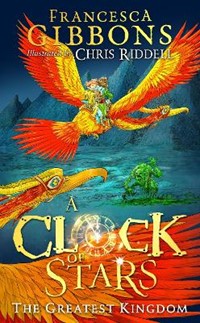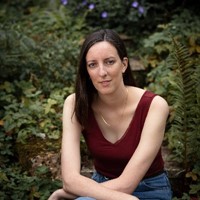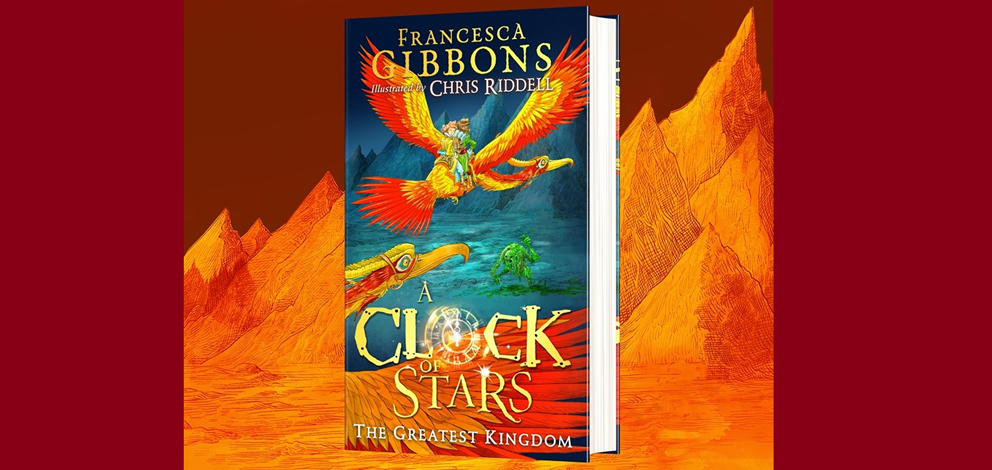Francesca Gibbons


About Author
Francesca Gibbons has been telling tall tales for as long as she can remember. She had the idea for The Shadow Moth when she was a child, inspired by the gardens she visited and her love of folklore and monsters. Now it's the first book in her middle-grade trilogy, A Clock of Stars, published by HarperCollins in 2020. Fran did most of her growing up in Staffordshire. She read English at the University of Bristol and now lives in the Cotswolds with her husband. She has previously worked as a freelance copywriter.
Illustrator Chris Riddell OBE is an author, an artist, the political cartoonist for the Observer and the illustrator of an extraordinary range of children's books, including titles by Neil Gaiman and J. K. Rowling. He has enjoyed great acclaim for his own books for children, and has won many major prizes, including the Costa Award and an unprecedented three CILIP Kate Greenaway Medals.
Interview
A Clock of Stars: The Greatest Kingdom (HarperCollins Children's Books)
May 2023
A secret door into a magical world; a clock that predicts the future; moths with a mission; and creatures on the prowl... all waiting to be discovered in this heart-stopping fantasy trilogy, A CLOCK OF STARS.
We asked author Francesca Gibbons to tell us more about her Clock of Stars trilogy, for readers aged 9+, with illustrations by Chris Riddell. The series includes The Shadow Moth, Beyond the Mountains, and the latest book, The Greatest Kingdom.

Q&A with Francesca Gibbons
1. Can you tell us a bit about your background as a writer, how did you start to write for children, and what other kinds of jobs have you had?
I've always written books for children. When I was a child, I used to make up stories for my sisters. In many ways, nothing has changed. I still imagine my little sisters reading my books (although both sisters are quite tall these days).
I also work as a freelance copywriter, which means I write the words for adverts and marketing. Sometimes copywriters have to get a message across with only three words. It's very good training for writing concise sentences.
In the past, I've worked in pubs, sold theatre tickets and been an artist's model.
2. How long did it take to write your debut, A Clock of Stars? Do you find writing hard work, or do you enjoy every moment of it?!
It took me eight years to write A Clock of Stars. That sounds like a long time, but I wasn't writing very much to begin with and I was working 9-5. I fitted writing in at the weekends. Then I started waking up early and writing for an hour before work.
I find writing hard and I love it. The two things go hand in hand. I think that is often the way with making things - whether you're painting, writing or anything else.
I'm always trying to write the kind of book young Fran would have enjoyed. A Clock of Stars is filled with my childhood dreams and fears.
3. What inspired you to take two children through a secret door in A Clock of Stars? Can you give us a glimpse into what adventures lie beyond that door for Imogen and Marie?
I first had the idea for A Clock of Stars when I was 12. My parents used to take me and my sisters to an old abandoned garden. I wrote a story set there, about a door in a tree.
I read it to my sisters and then I forgot all about it... until I was much older. I was pretending to work in an office when the idea came back to me and I decided to write the story again.
Beyond the magic door, Imogen and Marie find a shadowy kingdom. There are monsters that appear with the stars, giant birds and a prince who has no friends.
4. How did Imogen and Marie, who are sisters, develop? Did you draw on your own siblings to create their relationship?
I took a lot of inspiration from my childhood. As the oldest of three sisters, I know how important sibling relationships can be. Growing up, I often used my sisters as minions in my games. I think they've forgiven me now. We had a lot of fun, despite the arguments.
At the start of the book, Imogen, who is the oldest, is always trying to shake off Marie. But as the story progresses, Imogen starts to see there's more to her little sister than she realised.
5. The sisters find themselves in the world of Yaroslav; how long did you spend creating this world, and what for you helps to make a fantasy world 'real'?
I spent a lot of time in Yaroslav. I wrote and re-wrote scenes and descriptions, until I felt like I knew the city inside out. I also based elements of that world on places I've visited in real life. For example, some parts were inspired by the time I spent visiting relatives in the Czech Republic. I wrote quite a bit of the book while I was there.
6. The children are led to the secret door into the world of Yaroslav by a moth; why did you decide a moth was the best creature for this role?
A lot of people consider moths to be creepy. If you find one in the bathroom you get your dad to put it out - or squish it, depending on the dad. But most moths don't eat clothes. Some don't even come out at night. They pollinate plants and are an essential part of our habitat.
But it's the moth's perceived creepiness that drew me to them. In the world I've created, many of the people who seem trustworthy are up to no good, and often the most vilified characters are telling the truth. I wanted an animal that could symbolise that gap between reality and perception. The moth seemed like a good fit.
7. In the story, the Clock of Stars helps to mark the passing time and to give us clues about what might happen next. Why did you decide to bring the clock into the story like this?
A: All good clocks tell the time. But if a clock starts telling you what's going to happen next, it raises a few interesting questions. How does the clock know? Just because an event has been predicted, does it mean it will go ahead? Is there anything the children can do to change the future?
The magic clock is partially inspired by the astronomical clock in Prague. Like the one in my story, the Prague clock features a series of figures - including saints, a skeleton and an angel.
8. The children end up travelling quite far through Yaroslav, did you draw maps and outlines to help you plan the story and their journeys?
I always have a map on the go when I'm writing. It helps make the world feel more real to me. It also helps my geography - so I can have a rough idea of how long it will take characters to travel. I am constantly changing and updating these maps to fit with the story.
9. What about Chris Riddell's illustrations, has he drawn the characters and the world as you imagined them?
No. He has made the characters much better! The illustrations are very much Chris Riddell's interpretation of the book and I love what he's done. His work is so imaginative and expressive. I have his illustrations stuck on the walls where I write, so his ideas will feed into the next book.
10. What are your favourite escapes from writing?
I love painting. It's a proper escape because it uses a very different part of your brain. It sounds boring, but I also love walking. You always find something different when you pay close attention to the world around you - an unexplored footpath, a new kind of bird, a portal into another world...
 The Greatest Kingdom (A Clock of Stars, Book 3)
The Greatest Kingdom (A Clock of Stars, Book 3)
 Beyond the Mountains (A Clock of Stars, Book 2)
Beyond the Mountains (A Clock of Stars, Book 2)
 A Clock of Stars: The Shadow Moth
A Clock of Stars: The Shadow Moth
